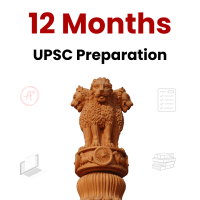UPSC Exam > UPSC Questions > The “Colombo Process” is associat...
Start Learning for Free
The “Colombo Process” is associated with which of the following?
- a)Economic cooperation among South Asian countries
- b)Migration and development in Asia
- c)Environmental protection in the Indian Ocean region
- d)Cultural exchange programs in Southeast Asia
Correct answer is option 'B'. Can you explain this answer?
Verified Answer
The “Colombo Process” is associated with which of the foll...
- Context: India has assumed the chair of the Colombo Process for 2024-26, the first time since the forum’s inception in 2003.
- About Colombo Process
- The Colombo Process is a Regional Consultative Process focused on managing overseas employment and contractual labour. It comprises 12 Asian member states, including Bangladesh and Sri Lanka, with India as a founding member. Priority areas include skills and qualification recognition and fostering ethical recruitment practices. The UN’s International Organization for Migration provides technical and administrative support.
Most Upvoted Answer
The “Colombo Process” is associated with which of the foll...
Colombo Process Overview
The Colombo Process is a significant initiative that focuses on the relationship between migration and development in Asia. It was established in 2003 and brings together countries of origin, transit, and destination for migrant workers.
Key Features of the Colombo Process:
- Regional Cooperation: The process aims to enhance cooperation among Asian countries regarding the management of labor migration.
- Policy Development: It facilitates the development of policies that promote safe, orderly, and regular migration while addressing the challenges and opportunities associated with labor mobility.
- Member Countries: The initiative includes countries such as Sri Lanka, India, Nepal, Bangladesh, Pakistan, and several Gulf states, focusing on the needs and rights of migrant workers.
- Focus on Migrant Workers: The primary goal is to protect the rights of migrant workers and ensure their contributions to both the economies of their host countries and their home countries.
- Capacity Building: The Colombo Process emphasizes capacity-building efforts to help member countries develop effective migration policies and practices, including training and awareness programs.
Conclusion
By addressing the complexities of migration and its impact on development, the Colombo Process serves as a platform for dialogue and collaboration among countries in Asia. It recognizes that migration is not just a challenge but also an opportunity for economic growth and social development, making it a pivotal element in the discourse on migration in the region.
The Colombo Process is a significant initiative that focuses on the relationship between migration and development in Asia. It was established in 2003 and brings together countries of origin, transit, and destination for migrant workers.
Key Features of the Colombo Process:
- Regional Cooperation: The process aims to enhance cooperation among Asian countries regarding the management of labor migration.
- Policy Development: It facilitates the development of policies that promote safe, orderly, and regular migration while addressing the challenges and opportunities associated with labor mobility.
- Member Countries: The initiative includes countries such as Sri Lanka, India, Nepal, Bangladesh, Pakistan, and several Gulf states, focusing on the needs and rights of migrant workers.
- Focus on Migrant Workers: The primary goal is to protect the rights of migrant workers and ensure their contributions to both the economies of their host countries and their home countries.
- Capacity Building: The Colombo Process emphasizes capacity-building efforts to help member countries develop effective migration policies and practices, including training and awareness programs.
Conclusion
By addressing the complexities of migration and its impact on development, the Colombo Process serves as a platform for dialogue and collaboration among countries in Asia. It recognizes that migration is not just a challenge but also an opportunity for economic growth and social development, making it a pivotal element in the discourse on migration in the region.

|
Explore Courses for UPSC exam
|

|
Question Description
The “Colombo Process” is associated with which of the following?a)Economic cooperation among South Asian countriesb)Migration and development in Asiac)Environmental protection in the Indian Ocean regiond)Cultural exchange programs in Southeast AsiaCorrect answer is option 'B'. Can you explain this answer? for UPSC 2025 is part of UPSC preparation. The Question and answers have been prepared according to the UPSC exam syllabus. Information about The “Colombo Process” is associated with which of the following?a)Economic cooperation among South Asian countriesb)Migration and development in Asiac)Environmental protection in the Indian Ocean regiond)Cultural exchange programs in Southeast AsiaCorrect answer is option 'B'. Can you explain this answer? covers all topics & solutions for UPSC 2025 Exam. Find important definitions, questions, meanings, examples, exercises and tests below for The “Colombo Process” is associated with which of the following?a)Economic cooperation among South Asian countriesb)Migration and development in Asiac)Environmental protection in the Indian Ocean regiond)Cultural exchange programs in Southeast AsiaCorrect answer is option 'B'. Can you explain this answer?.
The “Colombo Process” is associated with which of the following?a)Economic cooperation among South Asian countriesb)Migration and development in Asiac)Environmental protection in the Indian Ocean regiond)Cultural exchange programs in Southeast AsiaCorrect answer is option 'B'. Can you explain this answer? for UPSC 2025 is part of UPSC preparation. The Question and answers have been prepared according to the UPSC exam syllabus. Information about The “Colombo Process” is associated with which of the following?a)Economic cooperation among South Asian countriesb)Migration and development in Asiac)Environmental protection in the Indian Ocean regiond)Cultural exchange programs in Southeast AsiaCorrect answer is option 'B'. Can you explain this answer? covers all topics & solutions for UPSC 2025 Exam. Find important definitions, questions, meanings, examples, exercises and tests below for The “Colombo Process” is associated with which of the following?a)Economic cooperation among South Asian countriesb)Migration and development in Asiac)Environmental protection in the Indian Ocean regiond)Cultural exchange programs in Southeast AsiaCorrect answer is option 'B'. Can you explain this answer?.
Solutions for The “Colombo Process” is associated with which of the following?a)Economic cooperation among South Asian countriesb)Migration and development in Asiac)Environmental protection in the Indian Ocean regiond)Cultural exchange programs in Southeast AsiaCorrect answer is option 'B'. Can you explain this answer? in English & in Hindi are available as part of our courses for UPSC.
Download more important topics, notes, lectures and mock test series for UPSC Exam by signing up for free.
Here you can find the meaning of The “Colombo Process” is associated with which of the following?a)Economic cooperation among South Asian countriesb)Migration and development in Asiac)Environmental protection in the Indian Ocean regiond)Cultural exchange programs in Southeast AsiaCorrect answer is option 'B'. Can you explain this answer? defined & explained in the simplest way possible. Besides giving the explanation of
The “Colombo Process” is associated with which of the following?a)Economic cooperation among South Asian countriesb)Migration and development in Asiac)Environmental protection in the Indian Ocean regiond)Cultural exchange programs in Southeast AsiaCorrect answer is option 'B'. Can you explain this answer?, a detailed solution for The “Colombo Process” is associated with which of the following?a)Economic cooperation among South Asian countriesb)Migration and development in Asiac)Environmental protection in the Indian Ocean regiond)Cultural exchange programs in Southeast AsiaCorrect answer is option 'B'. Can you explain this answer? has been provided alongside types of The “Colombo Process” is associated with which of the following?a)Economic cooperation among South Asian countriesb)Migration and development in Asiac)Environmental protection in the Indian Ocean regiond)Cultural exchange programs in Southeast AsiaCorrect answer is option 'B'. Can you explain this answer? theory, EduRev gives you an
ample number of questions to practice The “Colombo Process” is associated with which of the following?a)Economic cooperation among South Asian countriesb)Migration and development in Asiac)Environmental protection in the Indian Ocean regiond)Cultural exchange programs in Southeast AsiaCorrect answer is option 'B'. Can you explain this answer? tests, examples and also practice UPSC tests.

|
Explore Courses for UPSC exam
|

|
Signup for Free!
Signup to see your scores go up within 7 days! Learn & Practice with 1000+ FREE Notes, Videos & Tests.


















